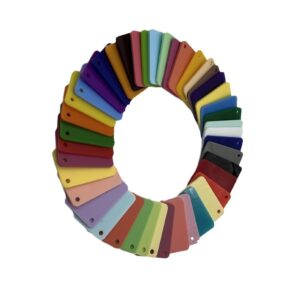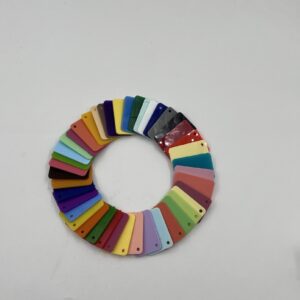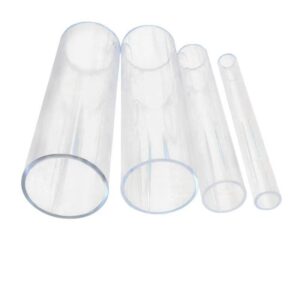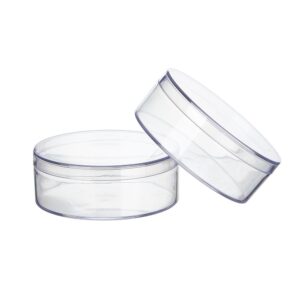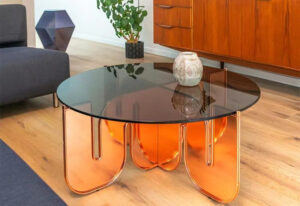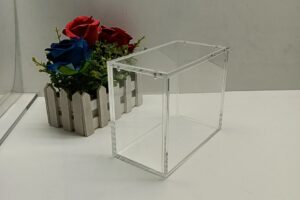Summary
Acrylic furniture, known for its clarity and modern aesthetic, requires specific maintenance techniques to preserve its appearance and longevity. As a versatile material that can mimic glass while being lighter and more durable, acrylic is popular in contemporary interior design, often used for items like elegant acrylic side tables and modern acrylic desks. However, its susceptibility to scratches and damage necessitates careful cleaning and maintenance practices. This topic is notable due to the increasing popularity of acrylic furniture in residential and commercial spaces, prompting a need for effective care methods to maintain its pristine condition.
The maintenance of acrylic furniture involves several essential practices, including regular cleaning with mild soap and specialized acrylic cleaners, and using non-abrasive tools like microfiber cloths. Additionally, preventive measures, such as applying protective coatings and avoiding exposure to harsh chemicals or direct sunlight, are crucial in minimizing wear and tear. Common challenges arise from improper cleaning techniques and neglecting minor scratches, which can worsen over time if not addressed promptly.
Controversies surrounding acrylic furniture maintenance often stem from the use of abrasive cleaning agents or tools, which can lead to irreversible damage. Many consumers may not be aware of the specific requirements for caring for acrylic, resulting in common mistakes that compromise the furniture’s integrity. Consequently, educating users about appropriate maintenance techniques is vital to ensuring the durability and aesthetic appeal of acrylic pieces.
Overall, understanding and implementing proper maintenance strategies is essential for anyone looking to invest in acrylic furniture. By following best practices, individuals can enhance the longevity and clarity of their acrylic furnishings, ensuring they remain attractive and functional for years to come.
Table of Contents
Materials Needed for Maintenance
To effectively maintain and care for acrylic furniture, it is essential to have the right materials on hand. These materials ensure that the cleaning and maintenance processes are safe and effective, preserving the clarity and longevity of the acrylic surfaces.
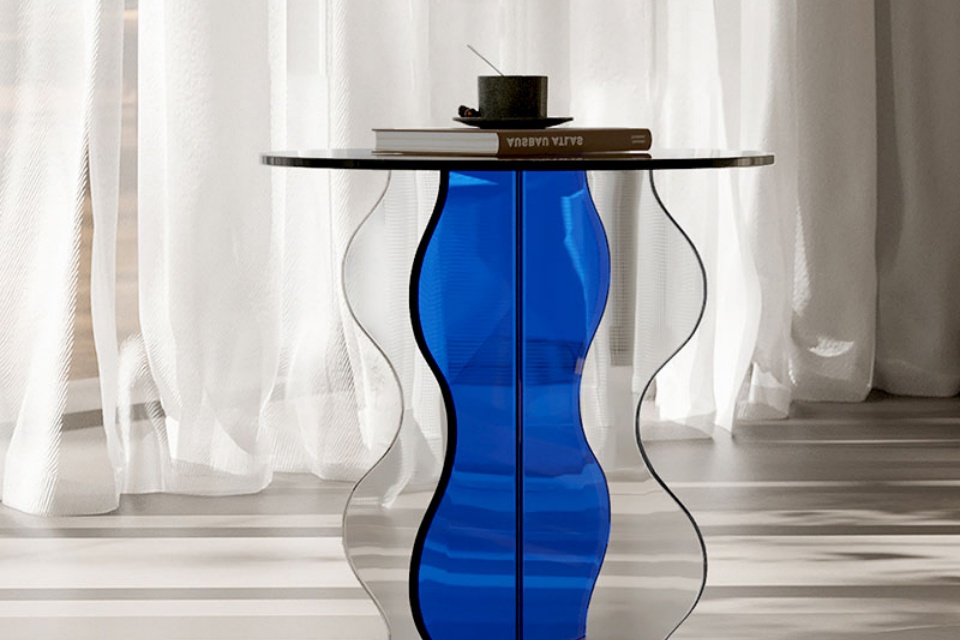
Cleaning Solutions
Mild Soap and Water
A gentle cleaning solution can be created by mixing a small amount of mild dish soap with lukewarm water. A recommended ratio is one teaspoon of soap to a quart of water. This solution is effective for regular cleaning and can help remove light dirt and grime without damaging the acrylic surface.
Specialized Acrylic Cleaners
Commercial cleaners specifically designed for acrylic, such as Novus #1 or Brillianize, are highly recommended. These products often include anti-static properties that help repel dust and can effectively clean stubborn stains without scratching the surface. Always follow the manufacturer’s instructions for optimal results.
Anti-static Cleaners
To combat dust accumulation, using anti-static cleaners can be beneficial. These products help reduce static electricity, which can attract dust particles to acrylic surfaces.
Cleaning Tools
Soft Cloths
Utilizing soft, non-abrasive cloths, such as microfiber cloths, is crucial. These cloths prevent scratches while cleaning and help apply the cleaning solutions effectively. Avoid using rough materials that could damage the clarity of the acrylic.
Soft Sponges
A soft sponge can also be used, especially for larger surfaces. Ensure that it is not abrasive, as aggressive scrubbing can lead to scratches.
Additional Materials
Baking Soda: A paste made from baking soda and water can be used to tackle particularly stubborn stains, as its mild abrasive properties can help lift marks without scratching the acrylic surface.
Car Wax: For minor scratches discovered during cleaning, applying car wax can help buff out the imperfections, restoring clarity to the surface.
Preventative Measures
Dusting Tools
Regular dusting with a soft dust cloth can prevent buildup on acrylic surfaces. Lightly moistening the cloth with an intensive plastic cleaner can enhance its effectiveness against heavier soiling.
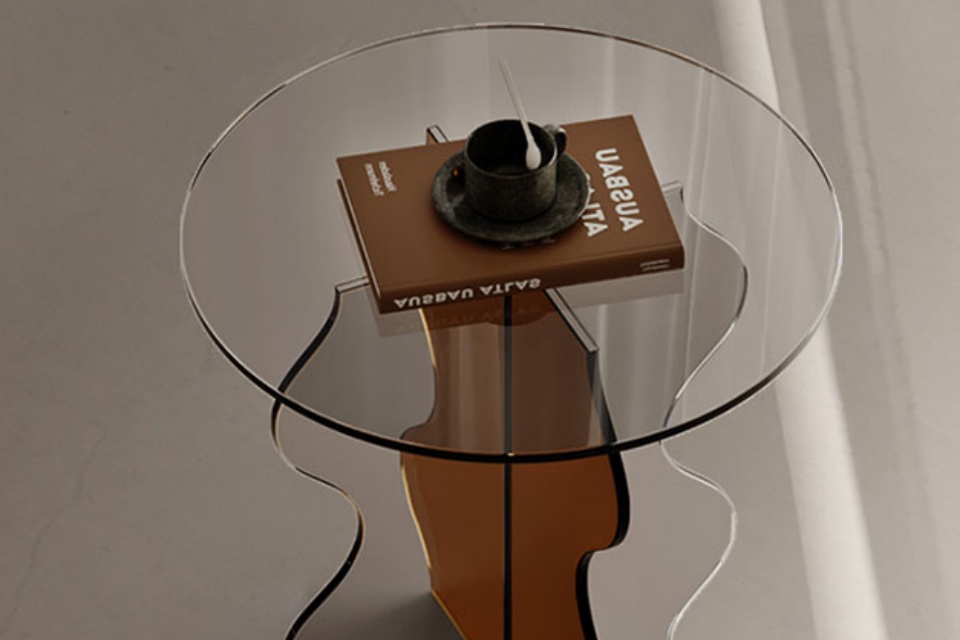
Cleaning Wipes
Having cleaning wipes with at least 70% alcohol can be useful for quick clean-ups. These wipes should be used with caution, as excess moisture can seep into edges or seams, potentially causing damage.
By gathering these materials and following proper cleaning protocols, you can maintain the clarity and appearance of your acrylic furniture over time.
Regular Cleaning Practices
Maintaining acrylic furniture involves consistent and careful cleaning practices to preserve its clarity and appearance. Regular cleaning not only enhances the aesthetic appeal but also prolongs the life of the acrylic pieces, from decorative acrylic trays to functional acrylic storage organizers.
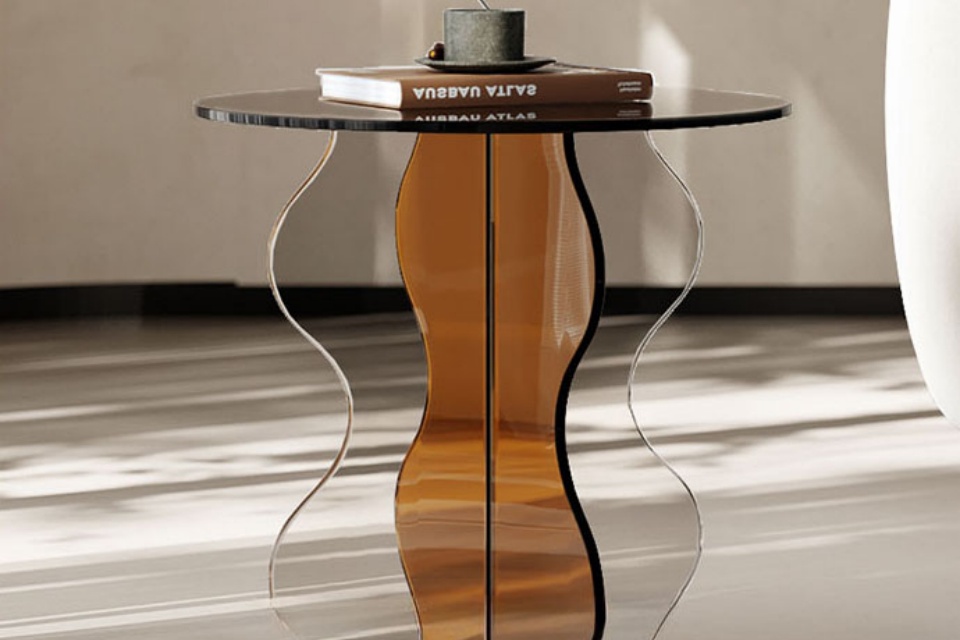
Tips for Preventing Damage
Maintaining the clarity and integrity of acrylic furniture requires consistent care and attention. Here are essential tips to prevent damage and ensure the longevity of your acrylic pieces.
Regular Cleaning Practices
Regular cleaning is crucial to keep acrylic surfaces free from dust and grime. It is recommended to use microfiber or soft cotton cloths for gentle cleaning, avoiding paper towels and abrasive materials that can scratch the surface. For routine maintenance, a mixture of mild soap and lukewarm water works well; apply it using a circular motion to lift dirt without causing scratches.
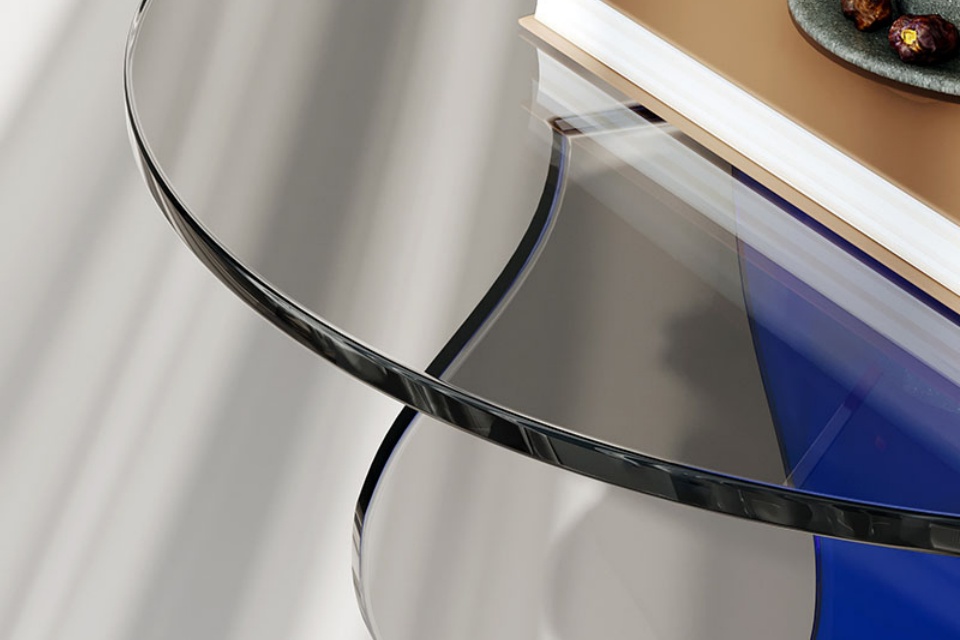
Protective Coatings
Applying a protective coating can enhance the scratch resistance of acrylic surfaces, especially in high-traffic areas. Various acrylic-compatible coatings are available that provide a protective layer, reducing the likelihood of scratches from daily use. This is particularly beneficial for surfaces that experience frequent handling.
Proper Handling and Storage
Acrylic, while lighter and stronger than glass, is still prone to scratches. To minimize damage, always carry acrylic items using both hands to distribute the weight evenly, and avoid dragging them across surfaces. Consider using gloves when handling to prevent fingerprints and smudges that may require excessive cleaning later. For storage, keep acrylic furniture covered with high-quality, non-abrasive materials when not in use, ensuring it is placed in a dry, cool location away from direct sunlight or heat sources.
Avoiding Heat and Sunlight Exposure
Acrylic is sensitive to heat and prolonged exposure to direct sunlight can lead to warping or discoloration. It is advisable to place acrylic furniture in shaded areas and away from heat sources, such as radiators. When using acrylic furniture outdoors, opt for UV-resistant acrylic options designed to withstand sun exposure.
Preventing Scratches from Everyday Items
To prevent scratches, be mindful of the items placed on or near acrylic surfaces. Sharp objects like pens, keys, and metal tools can easily scratch the acrylic if they come into contact. Use rubber or silicone pads under decorative items or merchandise to create a buffer between the items and the acrylic surface. Regular dusting with a soft, damp cloth can also help to prevent the accumulation of dust particles that could cause micro-scratches over time.
By implementing these preventative measures, you can significantly enhance the durability and clarity of your acrylic furniture, ensuring it remains an attractive feature in your home for years to come.
Common Mistakes and Challenges
Caring for acrylic furniture requires attention to detail and an understanding of the materials involved. However, several common mistakes and challenges can arise during the maintenance process.
Common Mistakes
One of the most prevalent mistakes is using abrasive materials for cleaning, which can scratch the surface of the acrylic. It is crucial to avoid products such as steel wool or scouring pads, as these can cause irreparable damage. Additionally, neglecting to follow the manufacturer’s instructions can lead to improper care and a decrease in the longevity of the furniture. For instance, using harsh chemicals or ammonia-based cleaners can strip the clarity of acrylic surfaces, making them look dull over time.
Another common mistake is failing to address minor scratches promptly. Utilizing acrylic polish to treat these blemishes as soon as they appear is essential; if left untreated, scratches can deepen and become more challenging to remove later. Regular cleaning with inappropriate products, such as abrasive cleaners, can also lead to accumulation of grime that may cause scratches or marks.
Common Challenges
Maintaining acrylic furniture can pose several challenges, particularly in terms of establishing a consistent cleaning routine. Factors such as high usage or environmental conditions like humidity may necessitate more frequent cleaning schedules, complicating the maintenance process. For instance, while a bi-weekly maintenance schedule is generally ideal, heavy use may require weekly attention, while lighter use might only need monthly care.
Another challenge is the need for proper tools and products. Selecting the right cleaning agents, such as mild soap solutions and non-abrasive sponges, is vital for effective maintenance. However, many individuals may overlook the importance of using microfiber cloths, which are gentle enough to avoid scratching the acrylic surface while effectively removing dust.
Repairing Minor Damage
Repairing minor scratches and maintaining the clarity of acrylic furniture is essential for preserving its aesthetic appeal and functionality. There are several effective techniques that can be employed to restore the surface of acrylic items, ensuring they remain in optimal condition over time.
Identifying Scratches
Before initiating any repair process, it is crucial to accurately identify the presence of scratches. Observing how light reflects off the surface can reveal inconsistencies, while running a fingernail gently over the area can help detect any catches, indicating a scratch’s presence. Additionally, using a magnifying glass can provide better visibility of even minor scratches, which may lead to more significant damage if left untreated.
Buffing Minor Scratches
For minor scratches, a simple yet effective method involves using a fine abrasive polish or a specialized acrylic scratch remover. To carry out this technique, apply the polish to a soft cloth and gently buff the scratched area in a circular motion until the scratch diminishes. This process not only helps eliminate the scratch but also restores the furniture’s original shine.
Using Polishing Kits
Polishing kits designed for acrylic surfaces can also be a fantastic tool for minor scratch removal. When using these kits, it is essential to start with a clean area to assess the scratches accurately. The polishing process requires applying the reviving treatment to the scratched surface first, followed by strong back-and-forth strokes with a clean, soft cloth. This should be repeated until the scratches are no longer visible. Once finished, any residual solution should be removed with a dry towel, followed by buffing the surface to achieve a polished look.
Addressing Deeper Scratches
In cases where scratches are deeper, a more intensive approach may be necessary. This can involve sanding the scratched area with progressively finer grades of wet-dry sandpaper, followed by polishing to restore the surface’s clarity. However, caution is advised, as improper sanding can lead to further damage. This method is best suited for those comfortable with DIY repairs, or it may be advisable to consult a professional for assistance to ensure the integrity of the acrylic sheet is maintained.
By employing these techniques for repairing minor damage, acrylic furniture can maintain its clarity and shine, ensuring its longevity and continued enjoyment in any space. Regular maintenance and timely intervention in the event of scratches can significantly contribute to the enduring appeal of acrylic furnishings.





